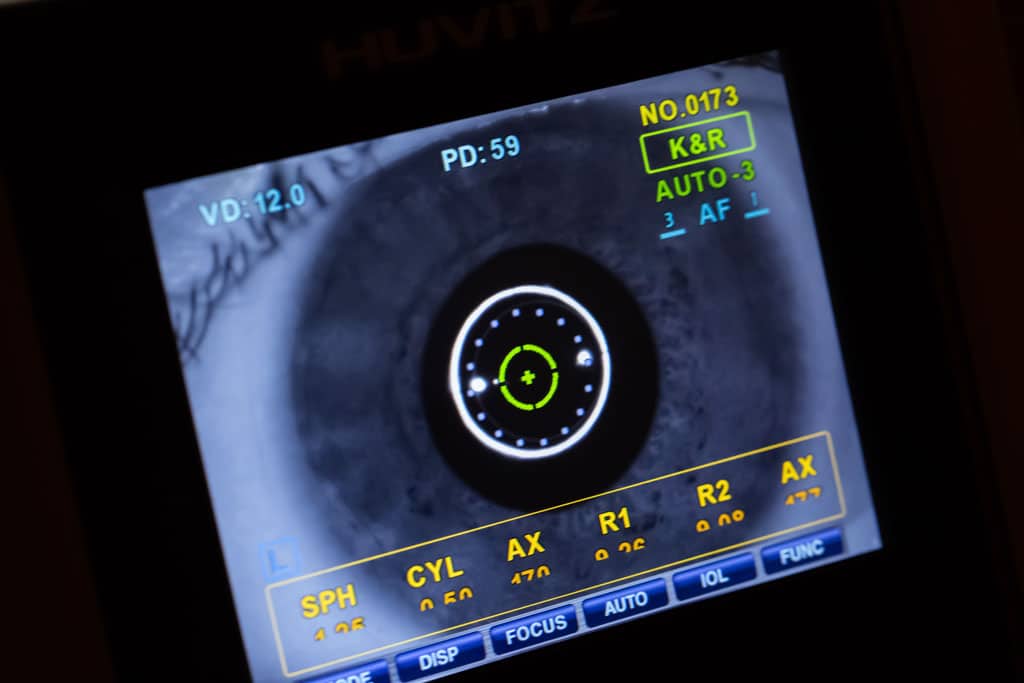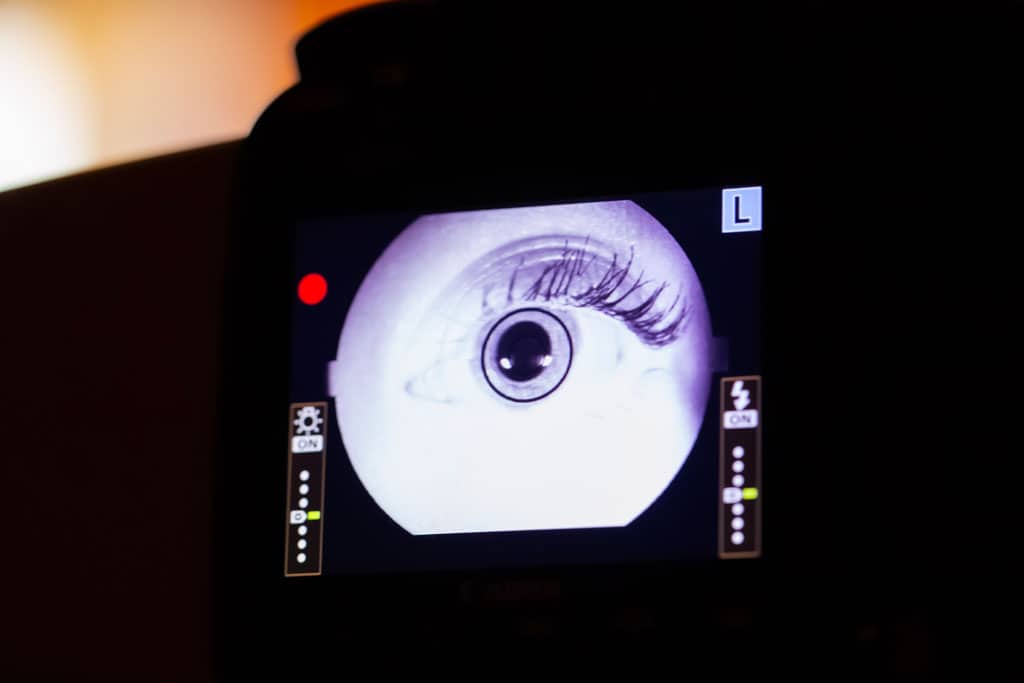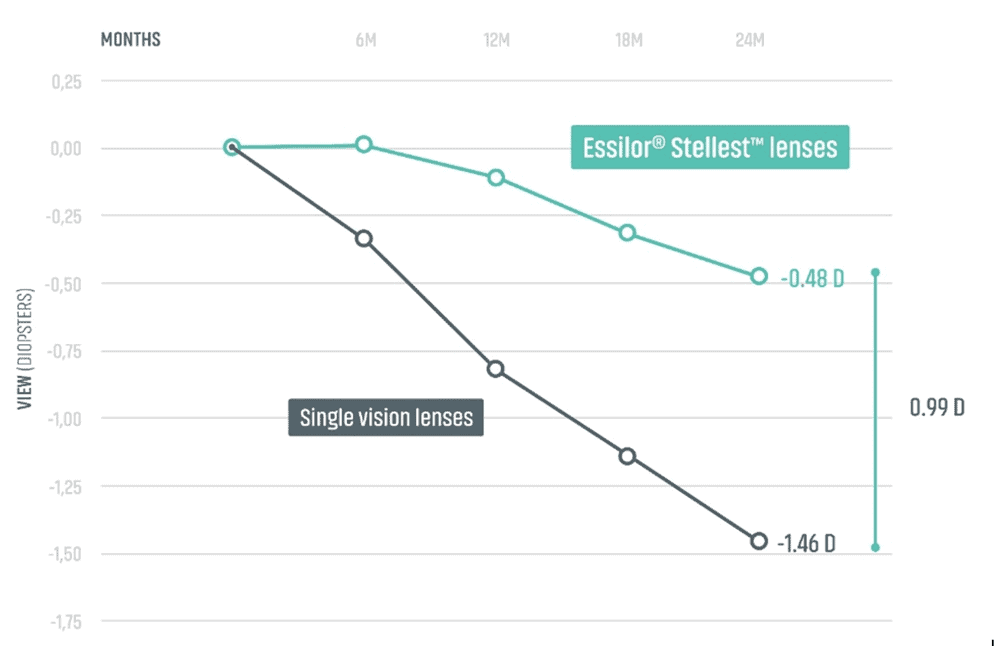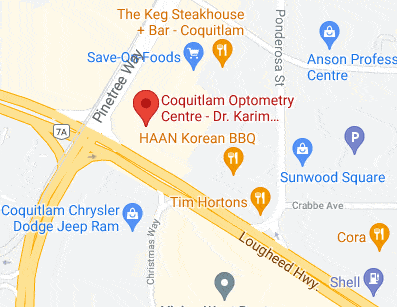Myopia Management


Myopia occurs when an eyeball is too long, or the cornea is too steeply curved. Entering light is focused in front of the retina causing distant objects to seem blurred. Along with blurry vision, adults with undiagnosed myopia may experience headaches or feel the need to squint to see.
This condition usually begins to develop in childhood and can progress until it stabilizes in adulthood. Some children may not even notice they have symptoms, which include:
- Unawareness of distant objects
- Excessive blinking
- Persistent squinting
- Frequent eye rubbing
- A need to sit closer to objects (television, classroom board)
Myopia tends to worsen as children age. This progression can lead to a reliance on heavy prescriptions, and severe cases of myopia increase the risk of developing eye conditions such as glaucoma, and retinal detachments.
The correlation between increasing myopia and potentially vision-threatening complications later in life is well established and is a growing concern for both eye care practitioners and parents worldwide. In North America, the rate of myopia occurrence has increased from 28% to more than 42% over the last two decades, and that number is increasing at an alarming rate, especially among school-aged children. 3-5. This is due to a combination of genetic and lifestyle factors.
Myopia can develop quickly in a child. Early management can help slow the progression of myopia and reduce the risk of complications in adulthood.
There are several tools we now have slow the progression of myopia:
Essilor Stellest Lenses:
Now, thanks to Essilor® Stellest™ lenses, it is possible to control the progression of myopia. The earlier your child’s myopia progression is controlled, the less impact it will have on their eyesight in the long run. With Stellest lenses, see your children grow, not their myopia.
Essilor Stellest lenses slow down myopia progression by 67% on average, compared to single vision lenses, when worn 12 hours per day.

The lens is made of a cutting-edge constellation of 1021 invisible lenslets. On top of bringing sharp vision as a standard single vision, this constellation creates a signal in the child eye acting as a shield against eye elongation.
CooperVision’s Brilliant Futures Myopia Management Program:
We are happy to inform you that we are certified providers in CooperVision’s Brilliant Futures” Myopia Management Program. The cornerstone of this comprehensive approach to myopia management in pediatric patients is the MiSight® 1 day contact lens – the first and only contact lens approved by the FDA to slow myopia progression in children, aged 8-12 at the initiation of treatment. MiSight® 1 day contact lenses have been shown in a multi-year clinical trial to reduce the average rate of myopia progression by 59%,’ which means that the relative risk of a myopia-associated pathology can be significantly reduced. This convenient, daily disposable contact lens is well-accepted by children and does not affect their daily activities. It is designed to be worn for ten or more hours per day, six or more days per week to get the maximum treatment effect. We are very excited to offer the Brilliant Futures” Myopia Management Program to our patients and we hope that you will join us in our efforts to combat pediatric myopia for a brighter tomorrow.
Atropine Therapy:
One form of myopia management is the prescribed use of atropine eye drops. Low doses of atropine can be effective for treating myopia progression. When applied, the eye drops relax the eyes’ focusing mechanisms. There are various types of low-dose atropine eye drops, but the suggested dosage is usually 0.025% to 0.01% to minimize the risk of potential side effects. Your optometrist can suggest the most effective dosage for your child, but it is important to understand how this medication works.
Atropine dilates the pupils and temporarily paralyzes the focusing muscle inside of your eye. When applied, low dose atropine eye drops were found to significantly reduce myopia progression in children, with minimal side effects. Recent studies have shown, the use of atropine eye drops, together with the Stellest lens has greater effect in slowing myopia progression, than if each is used separately.
Book an appointment with one our Optometrists to discuss which treatment options are the best for your child.


